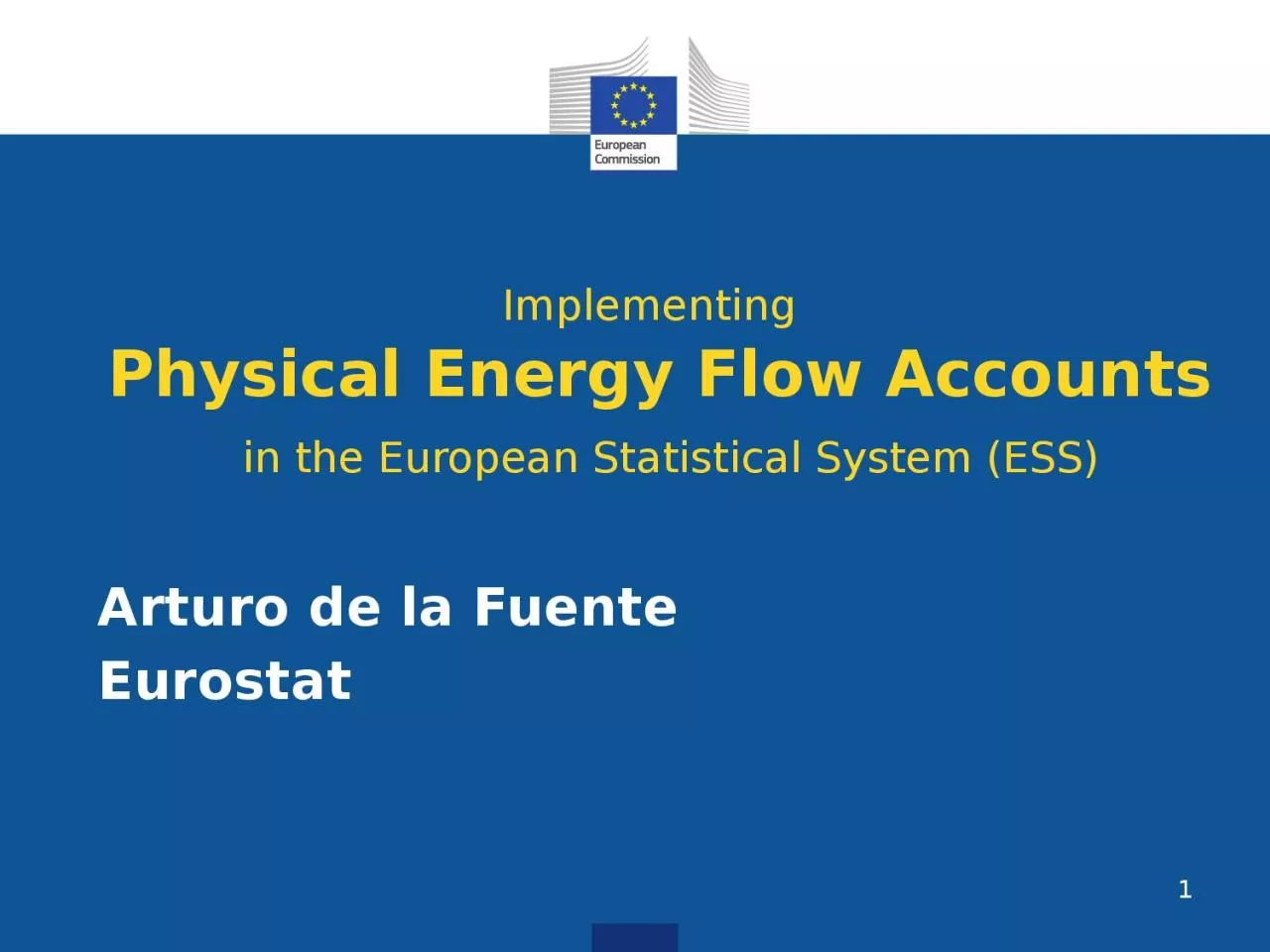

in the European Statistical System ESS Arturo de la Fuente Eurostat 1 Introduction historical overview 2009 Agreement to develop SEEAtype energy accounts in the European Statistical System ESS ID: 1018912
Download Presentation The PPT/PDF document "Implementing Physical Energy Flow Acco..." is the property of its rightful owner. Permission is granted to download and print the materials on this web site for personal, non-commercial use only, and to display it on your personal computer provided you do not modify the materials and that you retain all copyright notices contained in the materials. By downloading content from our website, you accept the terms of this agreement.
1. Implementing Physical Energy Flow Accounts in the European Statistical System (ESS)Arturo de la FuenteEurostat1
2. Introduction (historical overview)2009: Agreement to develop SEEA-type energy accounts in the European Statistical System (ESS)2009-2010: Discussion paper Eurostat Working Group on Environmental Accounts, choices taken:start with physical flow accountsfull-articulated framework of physical supply and use tables (PSUT)detailed industry breakdown (NACE A*64 = same as IOTs)2010-2014:Task force developed PEFA questionnaire and conceptual guidelines (closely based on SEEA-CF and draft SEEA-Energy)2
3. Set of tables in PEFA-questionnaire 20173
4. Introduction (historical overview)2012: decision to develop PEFA-Builder= IT-tool populating PEFA-questionnaire from already existing energy statistics (5 Annual Energy Questionnaires)= highly complex algorithms !2012-2014: EU legal base2014: draft PEFA Manual2014-2016: Voluntary data collections (response rate circa 50%) = learning process2017: first mandatory data collection4
5. Lessons learnt from implementation in EU:Implementation took 8 years!Yet, not all countries established PEFAQuality has to improve in the coming yearsMany conceptual and methodological issues (beyond SEEA) needed to be clarified and settledPEFA-Builder matured gradually accommodating 'wishes' from countriesusing this IT-tool requires expert knowledge5
6. Lessons learnt from implementation in EU:Policy use of PEFA needs to be sharpened:Currently, energy and climate policy making can widely be informed by energy statisticsWhat is the added value of PEFA? – further discussion needed on the potential of PEFA indicatorsMore integrated environmental-economic applications (including monetary accounts and air emissions accounts)e.g. structural decomposition analysisNeeded: same detailed industry breakdown as in national accounts (IOTs)6
7. Thank you!7